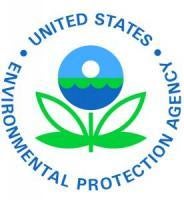WASHINGTON – The U.S. Environmental Protection Agency (EPA) is releasing its annual national analysis of the Toxics Release Inventory (TRI), providing all Americans with vital information about their communities. The TRI program publishes information on toxic chemical disposals and other releases into the air, land and water, as well as information on waste management and pollution prevention activities in neighborhoods across the country. Total releases including disposals for the latest reporting year, 2010, are higher than the previous two years but lower than 2007 and prior year totals. Many of the releases from TRI facilities are regulated under various EPA programs and requirements designed to limit human and environmental harm.
“We will continue to put accessible, meaningful information in the hands of the American people. Widespread public access to environmental information is fundamental to the work EPA does every day,” said EPA Administrator Lisa P. Jackson. “TRI is a cornerstone of EPA's community-right-to-know programs and has played a significant role in protecting people’s health and the environment by providing communities with valuable information on toxic chemical releases.”
Citizens have a right to know what toxic chemicals are being released into their communities. Over the past 25 years, the TRI program has helped citizens, emergency planners, public health officials, and others protect human health and the environment by providing them with toxic chemical release and other waste management data they need to make decisions that affect the safety and welfare of their communities.
The 2010 TRI data show that 3.93 billion pounds of toxic chemicals were released into the environment nationwide, a 16 percent increase from 2009. The increase is mainly due to changes in the metal mining sector, which typically involves large facilities handling large volumes of material. In this sector, even a small change in the chemical composition of the ore being mined -- which EPA understands is one of the reasons for the increase in total reported releases -- may lead to big changes in the amount of toxic chemicals reported nationally. Several other sectors also reported increases in toxic releases in 2010, including the chemical and primary metals industries.
Total air releases decreased 6 percent since 2009, continuing a trend seen over the past several years. Releases into surface water increased 9 percent and releases into land increased 28 percent since 2009, again due primarily to the metal mining sector.
EPA has improved this year’s TRI national analysis report by adding new information on facility efforts to reduce pollution and by considering whether economic factors could have affected the TRI data. With this report and EPA’s Web-based TRI tools, citizens can access information about the toxic chemical releases into the air, water, and land that occur locally. Finally, EPA’s first mobile application for accessing TRI data, myRTK, is now available in Spanish, as are expanded Spanish translations of national analysis documents and Web pages.
TRI data is submitted annually to EPA and states by multiple industry sectors including manufacturing, metal mining, electric utilities, and commercial hazardous waste facilities. Facilities must report their toxic chemical releases to EPA under the federal Emergency Planning and Community Right-to-Know Act (EPCRA) by July 1st of each year. The Pollution Prevention Act of 1990 also requires information on waste management activities related to TRI chemicals.
More on the 2010 TRI analysis and TRI Web-based tools: http://www.epa.gov/tri
More on myRTK: http://www.epa.gov/tri/myrtk/



 />i
/>i

